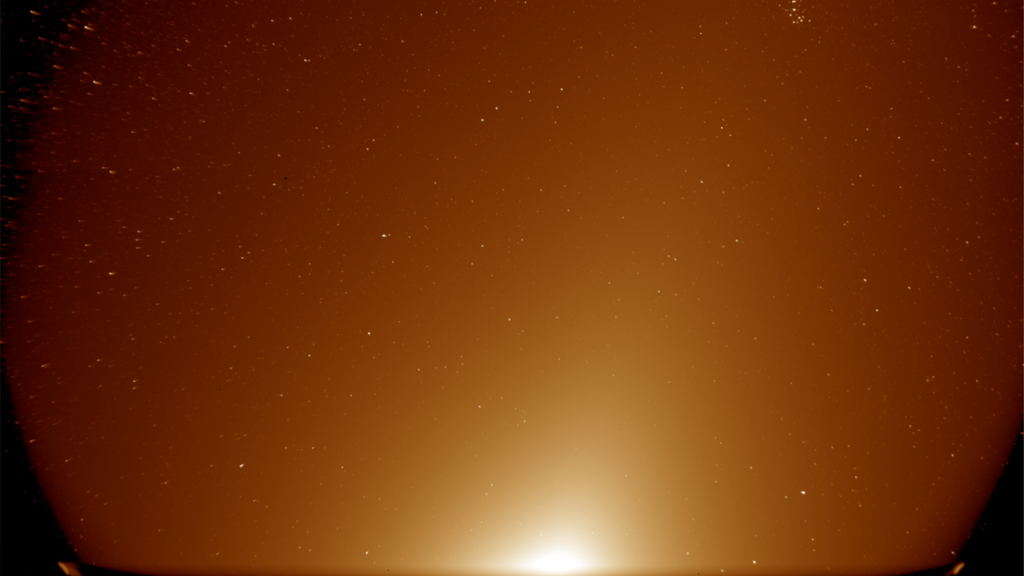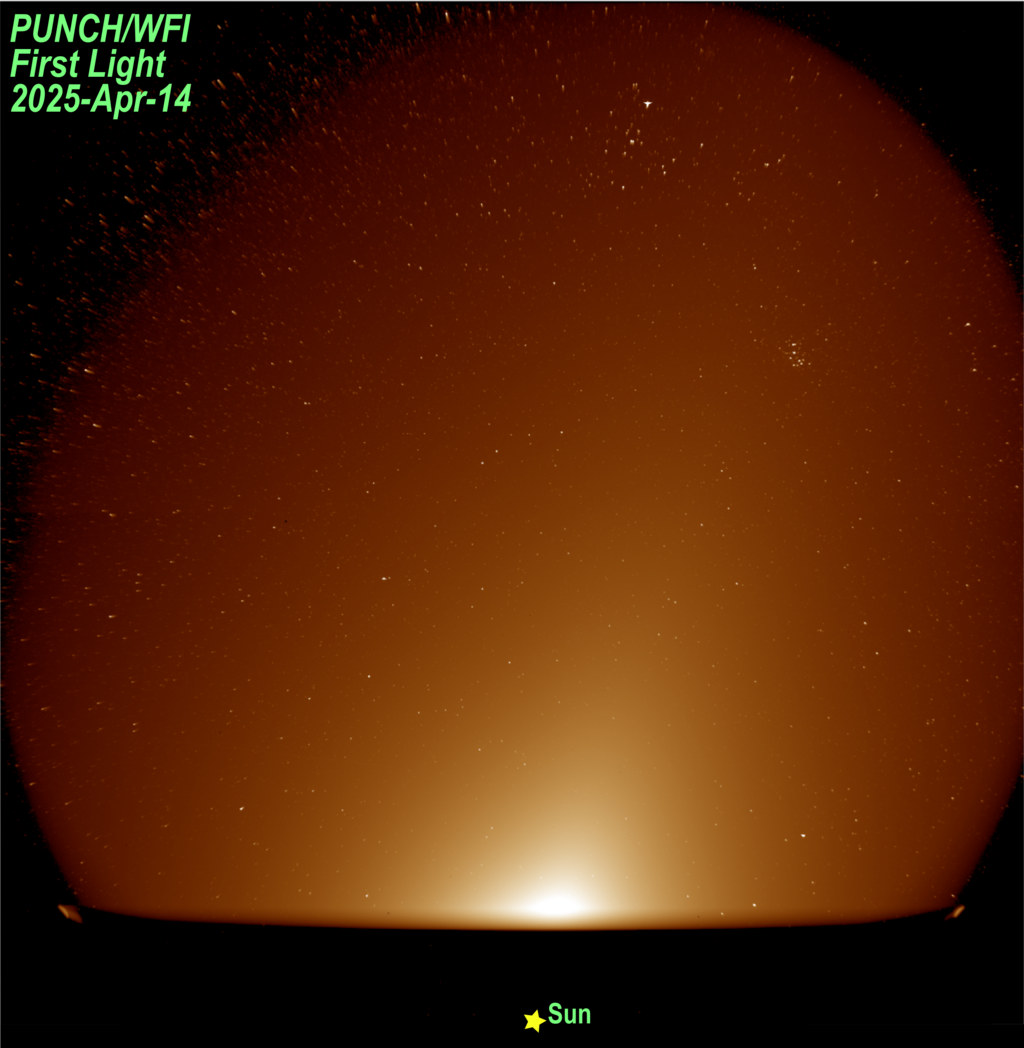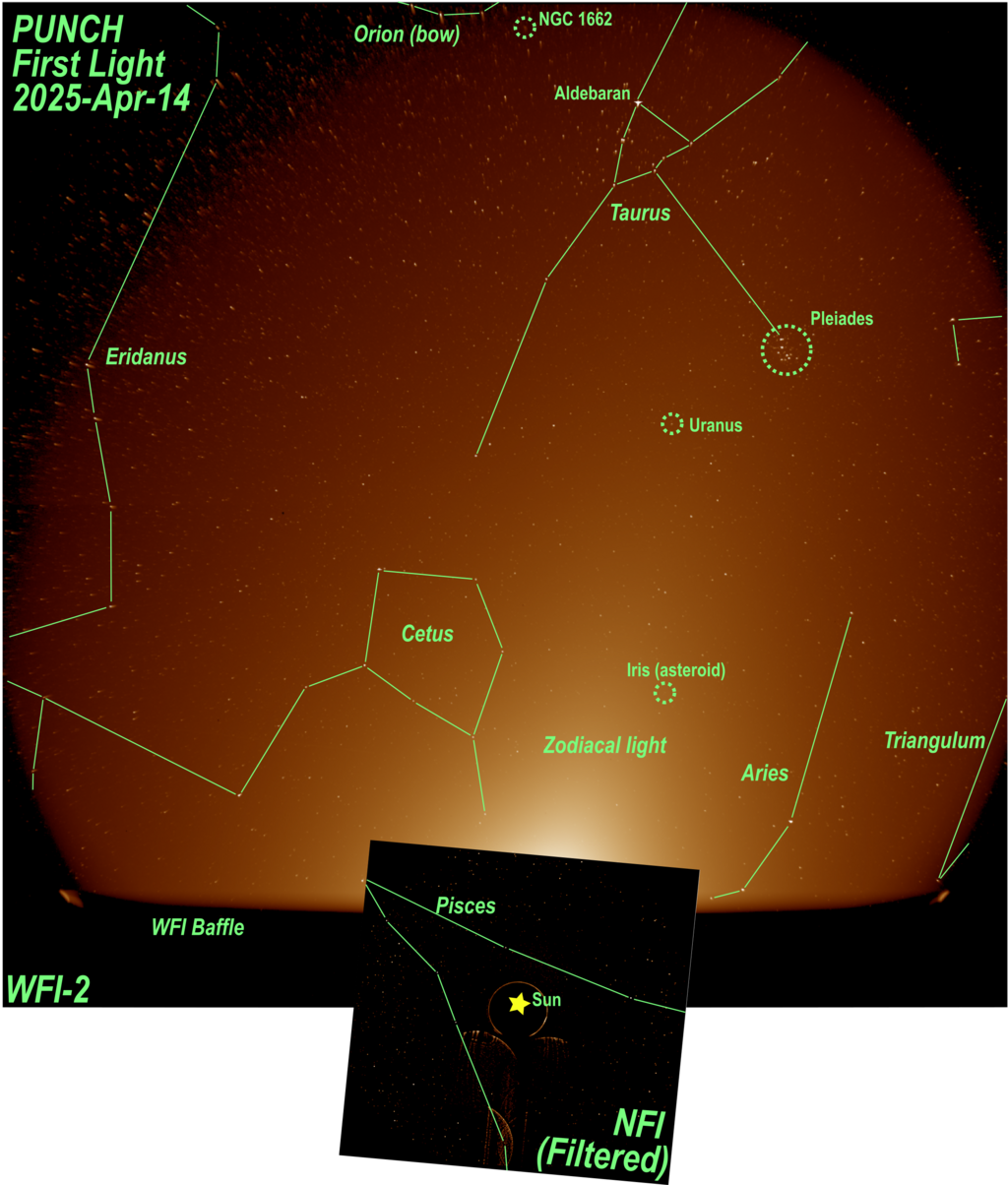NASA's sun-studying PUNCH mission captures its 1st-light images. Everything looks great so far
"All four instruments are functioning as designed."

Scientists announced on Friday (April 18) that the newest solar investigator in town has captured its first-light images — or should I say the newest solar investigators. That is, this NASA sun-studying mission, named PUNCH, is technically made up of four small satellites that are strategically distributed in our planet's orbit. The quartet is designed, however, to work together as a single instrument with the power to decode some of our star's biggest mysteries.
"All four instruments are functioning as designed. We're excited to finish on-orbit commissioning and get these cameras working together," Craig DeForest, at the Solar System Science and Exploration Division of the Southwest Research Institute (SwRI) in Boulder, Colorado, said in a statement.
What you're seeing in these images is a bunch of stars, visible as faint sparkles against a dark sky, enshrouded by a soft amber haze. This lovely luminescence is known as the "zodiacal light," which is a diffuse glow created by dust particles orbiting the sun reflecting sunlight toward Earth. If you look closely at the stars, there are even some constellations visible in the scene, like Taurus and Cetus. However, if all goes to plan, PUNCH's future cosmic images won't have any stars at all — or any zodiacal light, for that matter.
The ultimate purpose of PUNCH is to use its four instruments — three wide-field imagers (WFI) and a near-field imager (NFI) — to isolate features found within the solar wind. This is because one of the big sun mysteries that the mission aims to solve is the puzzle of how the sun's outer atmosphere, or corona, turns into the solar wind.
If you can imagine an invisible bubble around our cosmic neighborhood, aka the barrier between our solar system and the rest of the universe, that entire bubble is filled with streams of charged particles released from the solar corona. The filling of that bubble is the solar wind, and the bubble itself is known as the heliosphere.
But to come to conclusions about the transition between solar corona, the solar wind and the heliosphere, scientists need to isolate extremely faint features within all the solar material — and to isolate those features, there can't be any interference like background stars or zodiacal light.

"Throughout the commissioning phase, the PUNCH team is calibrating the NFI data to remove 99% of the light to show materials streaming out from the sun's outer atmosphere in stunning detail," DeForest said. "The three WFI 'first-light' images show star fields, but the ultimate goal is to remove the star field and other background light and preserve the faint glimmer of the solar wind as it travels to Earth."
Breaking space news, the latest updates on rocket launches, skywatching events and more!
What these first-light images prove, however, is that the instruments are usable and working in such a way that this process can happen. According to the statement, one NFI and one WFI were activated on April 14, and the other two NFIs were activated on April 16.

Once everything seems to be going well, we'll hopefully get a look into how PUNCH is meant to take advantage of a property of light called polarization.
"A polarimeter is a camera that can measure polarized light like you might see through a pair of polarized sunglasses, and we use that to measure what we're imaging in three dimensions," DeForest previously explained in a press conference. "As we look at the solar wind, we're looking at sunlight that's scattered off the actual material that we're seeing. That scattering process polarizes the light, and the degree of polarization tells us where the object was in three dimensions."
Furthermore, it would appear that during the PUNCH mission's 90-day commissioning period, the team managed to demonstrate the capabilities of new "water-powered, shot-glass-sized" rocket engines. These engines, which the team says can carry safe and nontoxic propellant, work by the spacecraft passing an electric current through water to create stores of high-pressure hydrogen and oxygen. That hydrogen and oxygen can then burn as fuel when the team needs to correct any of the spacecrafts' trajectories.
DeForest says the "safety and stability" of this propulsion system is worth it, likely because, as the statement explains, each of the satellites will need to maneuver hundreds of times to maintain proper position.
PUNCH launched on March 11, sharing a SpaceX Falcon 9 rocket ride to Earth orbit with NASA's SPHEREx mission (which is basically like a wide-angle James Webb Space Telescope). After PUNCH's commissioning phase finally comes to a close, the team says we should be seeing scientific information start pouring out this summer; data analysis is set to begin in June.
Join our Space Forums to keep talking space on the latest missions, night sky and more! And if you have a news tip, correction or comment, let us know at: community@space.com.

Monisha Ravisetti is Space.com's Astronomy Editor. She covers black holes, star explosions, gravitational waves, exoplanet discoveries and other enigmas hidden across the fabric of space and time. Previously, she was a science writer at CNET, and before that, reported for The Academic Times. Prior to becoming a writer, she was an immunology researcher at Weill Cornell Medical Center in New York. She graduated from New York University in 2018 with a B.A. in philosophy, physics and chemistry. She spends too much time playing online chess. Her favorite planet is Earth.
You must confirm your public display name before commenting
Please logout and then login again, you will then be prompted to enter your display name.
